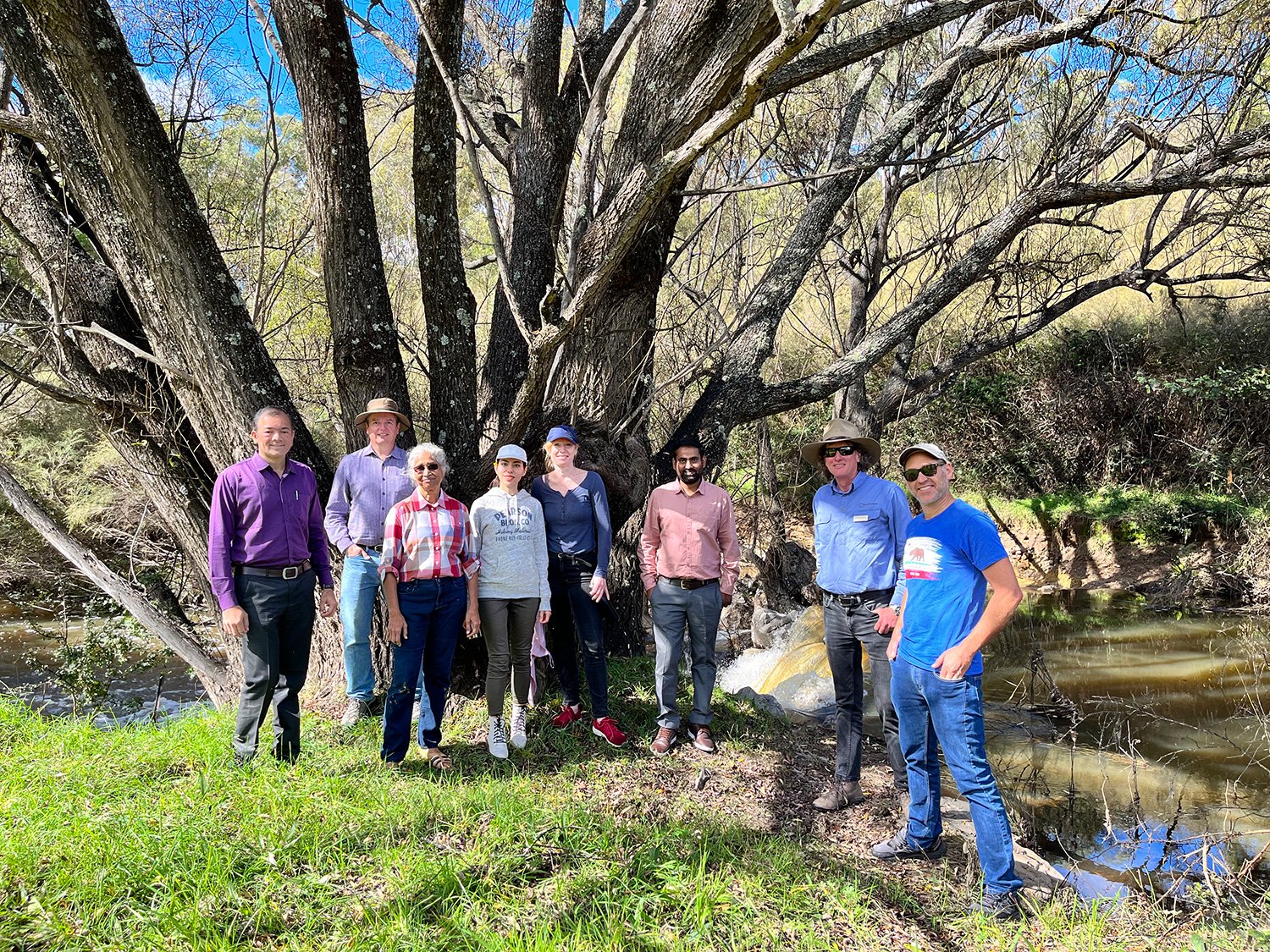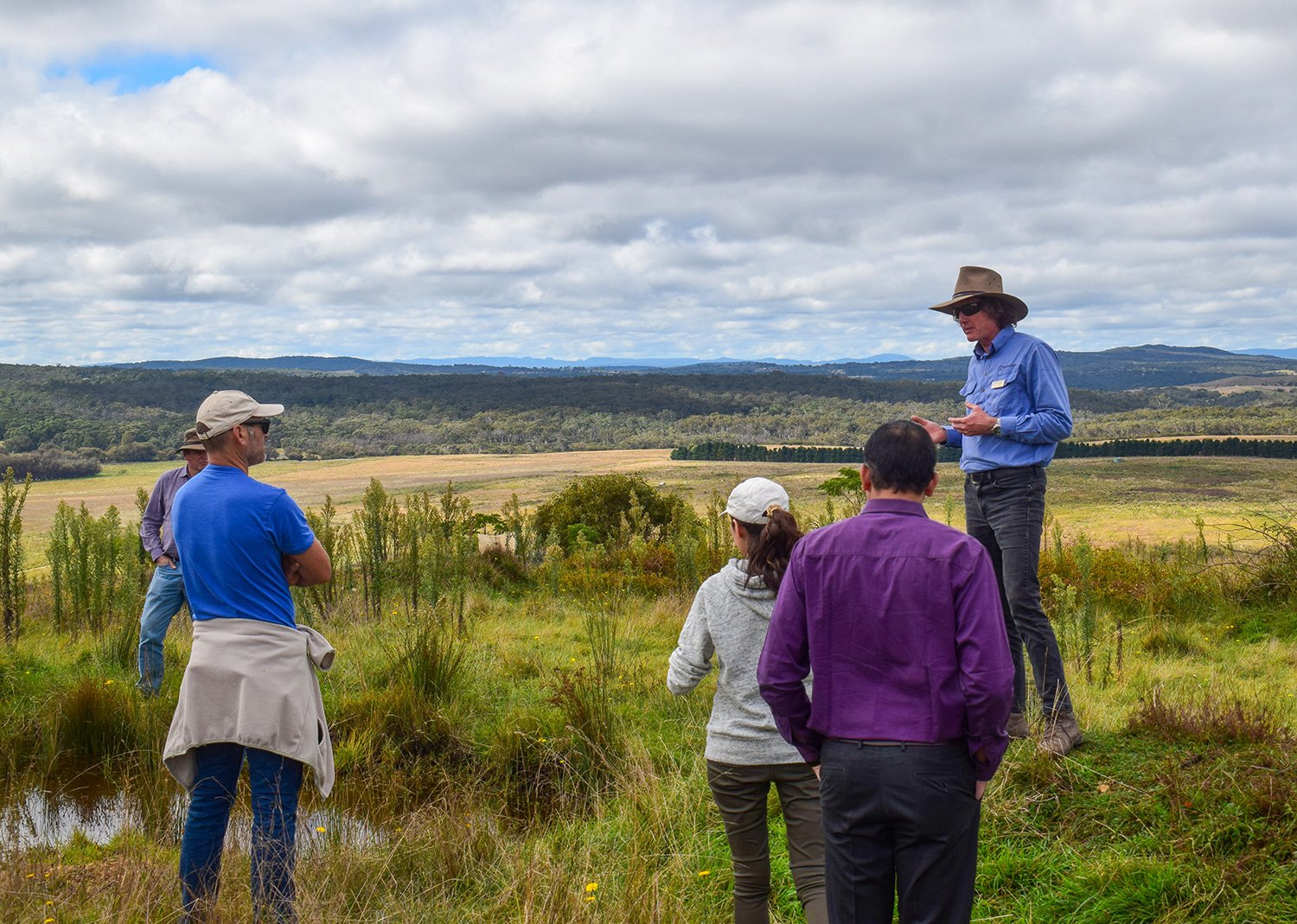At Peter’s Pond on Mulloon Creek
On a sunny autumn morning the Mulloon Institute’s Research Coordinator Luke Peel and Graduate Landscape Planners Erin Healy and Paris Capell met with members from WOTR, the Borevitz Lab and GIZ for a tour of Mulloon Creek.
The team from the Watershed Organisation Trust (WOTR) had travelled from India to see the landscape rehydration works being undertaken as part of the work at the Mulloon Rehydration Initiative. The MRI is a catchment-scale project that aims to rebuild the natural landscape function of the Mulloon catchment and boost its resilience to climatic extremes. It is jointly funded through the Mulloon Institute and the Australian Government’s National Landcare Program and with support from the NSW Government’s Environmental Trust.
Dr. Marcella D’Souza, director of the WOTR Centre for Resilience Studies, shared some of the contextual challenges and learnings taken from the Indian landscape and climate that have similarities with many regions across Australia. It was great to discuss common challenges such as raising awareness and ecological education in communities within dehydrated landscapes. WOTR are leading rehydration and social transformation projects in India, and the team at Mulloon looks forward to strengthening our relationship with WOTR into the future.
TMI were also delighted to be joined by representatives from Australian National University Professors Justin Borevitz and Jamie Pittock, and Dr Firouzeh Taghikhah who is leading the development of the farm model DAESim (Dynamic Agro-Ecological Simulator) for natural capital assessment. After the tour at Mulloon Creek and further discussions between the group, Firouzeh looks forward to integrating some of concepts presented at Mulloon into her model to better simulate the interactions between soil, plants, and water.
Viewing the ponds at Duralla on the ridge-line contour.
The group commenced their tour at the Duralla ridge-line contours and tree-planting, with a brief stop in front of the pasture raised chicken and cattle grazing operation which prompted a great discussion point for how integrated livestock management within farming systems to maximise production systems and the pasture. The group then travelled to Mulloon Creek Natural Farms (Home Farm) to view the pilot project sites and landscape rehydration works and resultant vegetation growth in the riparian zone and adjacent floodplain pastures. The group were enthusiastic to learn more from Luke about TMI’s extensive monitoring work and the data is expected to be trialled with Firouzeh’s model.
After a wet couple of years, it was great to see how well the Mulloon landscape has responded. Our visitors were impressed with the dense groundcover across the ridgeline and hillslopes below the contours at Duralla. They were equally impressed with how the contours have become small wetlands attracting animals and self-propagation of native wetland plant species. Much of the tree plantings occurred from late 2017 to 2019 during the extreme drought yet have had extraordinary growth due to the rehydration works and expert planting managed by TMI’s team of Peter Hazell, Max Brunswick, Penny Cooper and numerous volunteers.
Thank-you to Justin Borevitz and his team for organising the visit. We look forward to hosting more national and international partners at Mulloon as Australia lifts its travel restrictions.

